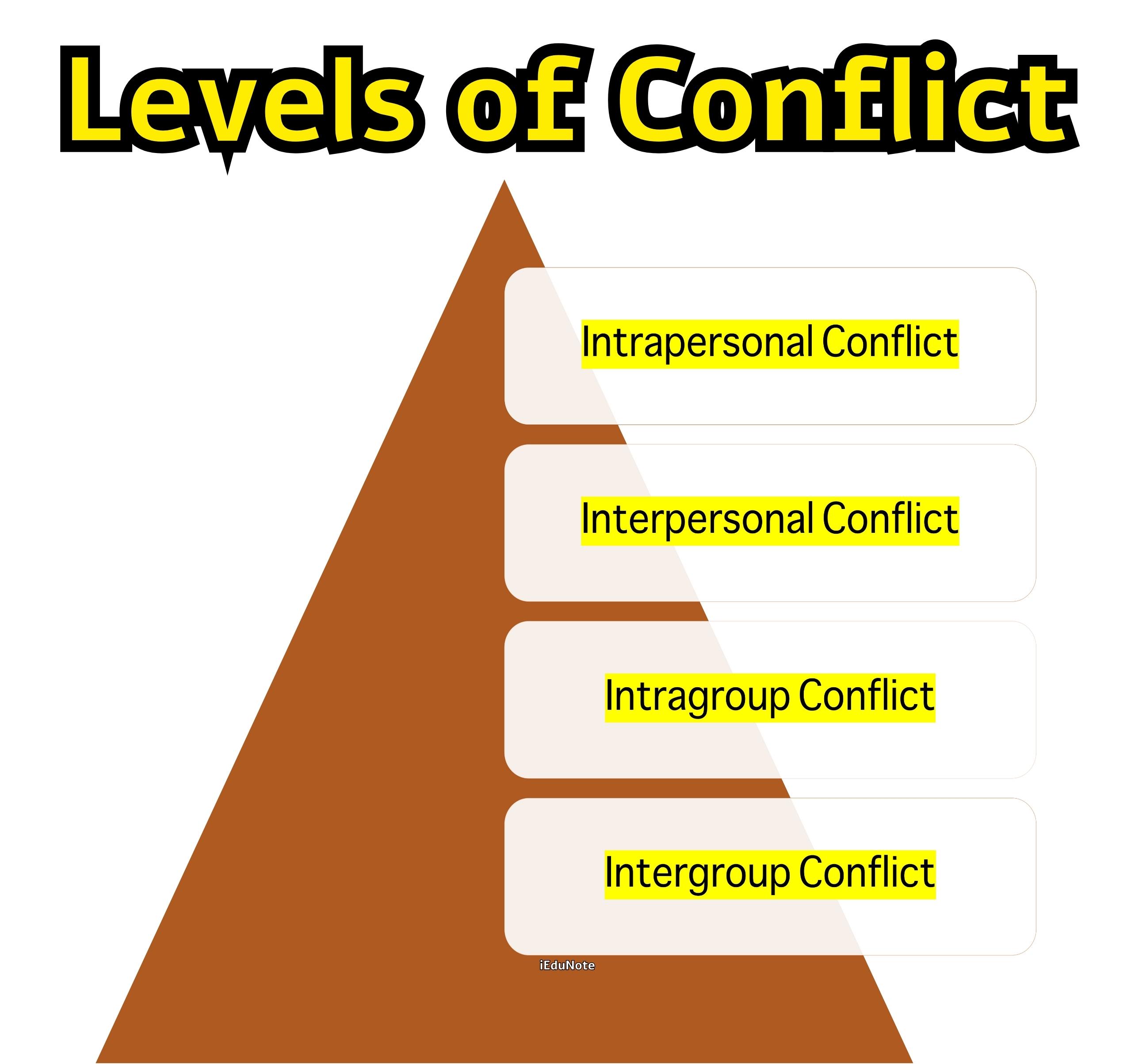Intergroup conflict refers to collective incompatibility or disagreement between two or more divisions, departments, or subsystems in connection with tasks, resources, information, and so on.
Understand Intergroup Conflict.
What is Intergroup Conflict?
Intergroup conflict is a form of disagreement or incompatibility between two or more organizational subdivisions over tasks, resources, or information.
Such conflicts may lead to changes within the groups and affect productivity. Techniques for managing such conflicts include diagnosis, intervention, and the implementation of organization development. Effective conflict resolution strategies like problem-solving can increase collaboration among groups.
However, for long-term improvement, the underlying dynamics of intergroup conflict must be addressed, and continuous collaboration must be established.
Roloff (1987) has rightly indicated that while this form of conflict implies each member of a group conflicts with those of another, quite often, the actual dispute is carried out between representatives (e,g. department heads, or labor-management negotiators.
Intergroup conflicts generally involve conflicts of interest within the competing groups as well.
Realistic group-conflict theory maintains that intergroup conflicts are rational “in the sense that groups do have incompatible goals and are in competition for scarce resources.
In the discipline of Social Psychology, intergroup conflict may be defined as an incompatibility of goals, beliefs, attitudes, or behaviors among groups.
Consequences of Intergroup Conflict
Intergroup conflict causes changes to occur, both within the groups in conflict and between them. Within the groups, members will usually overlook individual differences in an effort to unite against the other side, and with this concerted effort, the focus is on the task.
The group can become more efficient and effective at what they do, and members can become more loyal, closely following group norms. Problems can occur, however, when the group loses focus on the organization’s goals and becomes closed off from other groups.
Haughtiness and isolation quickly lead to decreased communication. Communication is the key between groups in reciprocal interdependence, and these have the highest negative consequences for lack of effective communication. Miscommunication can be the death knell of any organization.
Managing Intergroup Conflict
Diagnosis and intervention are two methods that help manage intergroup conflict. After diagnosis, an appropriate intervention strategy is selected based on diagnostic data analysis.
Several intervention strategies, broadly classified as process and structural, are presented for managing intergroup conflict. The intervention strategies presented here are quite relevant and are expected to affect the extent of intergroup conflict and the styles of handling such conflict.
Process interventions, such as organization development, are designed to help participants mainly learn collaborative behavior to find the sources of conflict and arrive at creative solutions.
It should be noted that these interventions are useful when intergroup conflict is strategic rather than frictional or minor.
Two intervention strategies for managing intergroup conflicts are as follows:
- Problem-solving: The problem-solving strategy is designed to help the members of two groups learn integrating styles to handle their differences.
- Organizational mirroring strategy: The organizational mirroring intervention is appropriate when more than two groups are having problems working together.
Several studies have demonstrated the importance of problem-solving in managing intergroup conflict (e.g., Blake & Mounton, 1984; Blake et al., 1964; Likert & Likert, 1976; Schmidt & Tannenbaum, 1960).
Blake & Mounton (1984) have discussed the following conventional approaches to the resolution of intergroup conflict, which often lead to frustration and failure.
Causes of Intergroup Conflict
The causes of intergroup conflict are as follows:
- The most prominent reason for intergroup conflict is simply the nature of the group.
- Other reasons may include work interdependence, goal variances, differences in perceptions, and the increased demand for specialists.
- Also, individual members of a group often play a role in the initiation of group conflict. Any given group embodies various qualities, values, or unique traits that are created, followed, and even defended. These clans can then distinguish “us” from “them.”
- Relationships between groups often reflect the opinions they hold of each other’s characteristics. When groups share some interests and their directions seem parallel, each group may view the other positively. However, if the activities and goals of groups differ, they may view each other in a negative manner. When trying to prevent or correct intergroup conflict, it is important to consider the history of relations between the groups in conflict. History will repeat itself if left to its own devices.
- Limited resources and reward structures can foster intergroup conflict by making the differences in group goals more apparent.
- Differences in perceptions among groups regarding time and status, when coupled with different group goals, can also create conflict. Reorganization of the workplace and integration of services and facilities can be stressful to some and create negative conflict.
- Some individuals within the group have inherent traits or social histories that impact intergroup conflict. Still, problems within intergroup relations are not usually caused by the deviant behavior of a few individuals.
How To Solve Intergroup Conflicts?
Conventional approaches to intergroup problem-solving are as follows:
- Cooperation by edict/law.
- Negotiations.
- Leadership replacement.
- Personnel rotation.
- Structural solutions.
- Liaison persons.
- Flexible reporting relationships.
- Mediation and arbitration.
These interventions are ineffective in improving intergroup relationships within an organization in the long term. These approaches to intergroup conflict resolution were ineffective in dealing with the underlying dynamics of intergroup conflict and establishing a basis for continued collaboration.
To deal with intergroup conflict effectively, the members or representatives of the groups should learn the problem-solving process. Problem-solving involves five distinct steps (Rahim & Bonoma, 1979):
Intergroup Conflicts and Problem Solving
Problem formulation
The process of problem formulation starts with the diagnosis of the nature and sources of intergroup conflict. It includes four parts.
- The representatives or leaders of the two groups and/or the consultants present the diagnostic data to the intergroup members.
- The participants divide themselves into subgroups and meet separately to discuss and identify the intragroup problems that are causing unnecessary conflict.
- The groups discuss and integrate the problems identified by the subgroups. They prepare the final list of problems.
- The intergroup ranks the final list of problems.
Problem solution
This step involves the formulation of alternative solutions to the problems identified earlier. It involves three sections.
- The intergroup formulates the criteria for solutions.
- The subgroups meet separately and formulate alternative solutions to the problems identified.
- The intergroup discusses and integrates the alternative solutions. It ranks the alternative solutions for each problem.
Preparation for a plan
This step in problem-solving involves the preparation of a plan for the implementation of the solutions decided earlier. Five parts are identified.
- Subgroup prepares a plan for implementation (including monitoring of implementation) of the problem solution.
- The intergroup discusses and analyzes the implementation plans prepared by the subgroups. The intergroup prepares the final plan for implementation (including monitoring of implementation) of the solution.
- The intergroup identifies the problems of implementation. It prepares strategies for overcoming resistance to change.
- The intergroup assigns responsibilities for implementation and monitoring implementation to specified individuals.
- The intergroup prepares a schedule for follow-up.
Implementation of the plan
This involves the actual implementation of the prepared plan. It involves the following:
- Responsible representatives implement the plan.
- Responsible representatives monitor implementation.
Implementation review
This is the final step in problem-solving. The first session is devoted to the attainment of steps A, B, and C. A second session is required to review the results of step d. In this,
- The intergroup meets to evaluate the impact of the plan as specified in step 3.
- The intergroup may recommend corrective actions if the result of implementation deviates from the standards.
- The intergroup decides whether to recycle the problem-solving process.
It has been observed that the process of problem-solving often leads to the emergence of superordinate goals that are attractive to any single group. Sherif (1958) has demonstrated that the introduction of a series of superordinate goals is indeed effective in reducing intergroup conflict.
Hunger and Stem’s (1976) experimental study suggested that “the superordinate goal retards the development of felt conflict even if the frustrating antecedent conditions remain and although a non-achieved superordinate goal does not reduce or even retard/hinder the re-ordinate goal introduced.”
The problem-solving process can also be used to manage intragroup conflict, provided the group is large enough so that two or more subgroups are in conflict. Another intervention that has been used to manage intergroup conflict is the confrontation technique.
Several variations of confrontation designs have been used in organizations with improved intergroup relations reported.
Confrontation and problem-solving processes use different designs, but they attempt to attain similar objectives: to enable the participants to learn the integrating or collaborating style to deal with intergroup problems synergistically.

